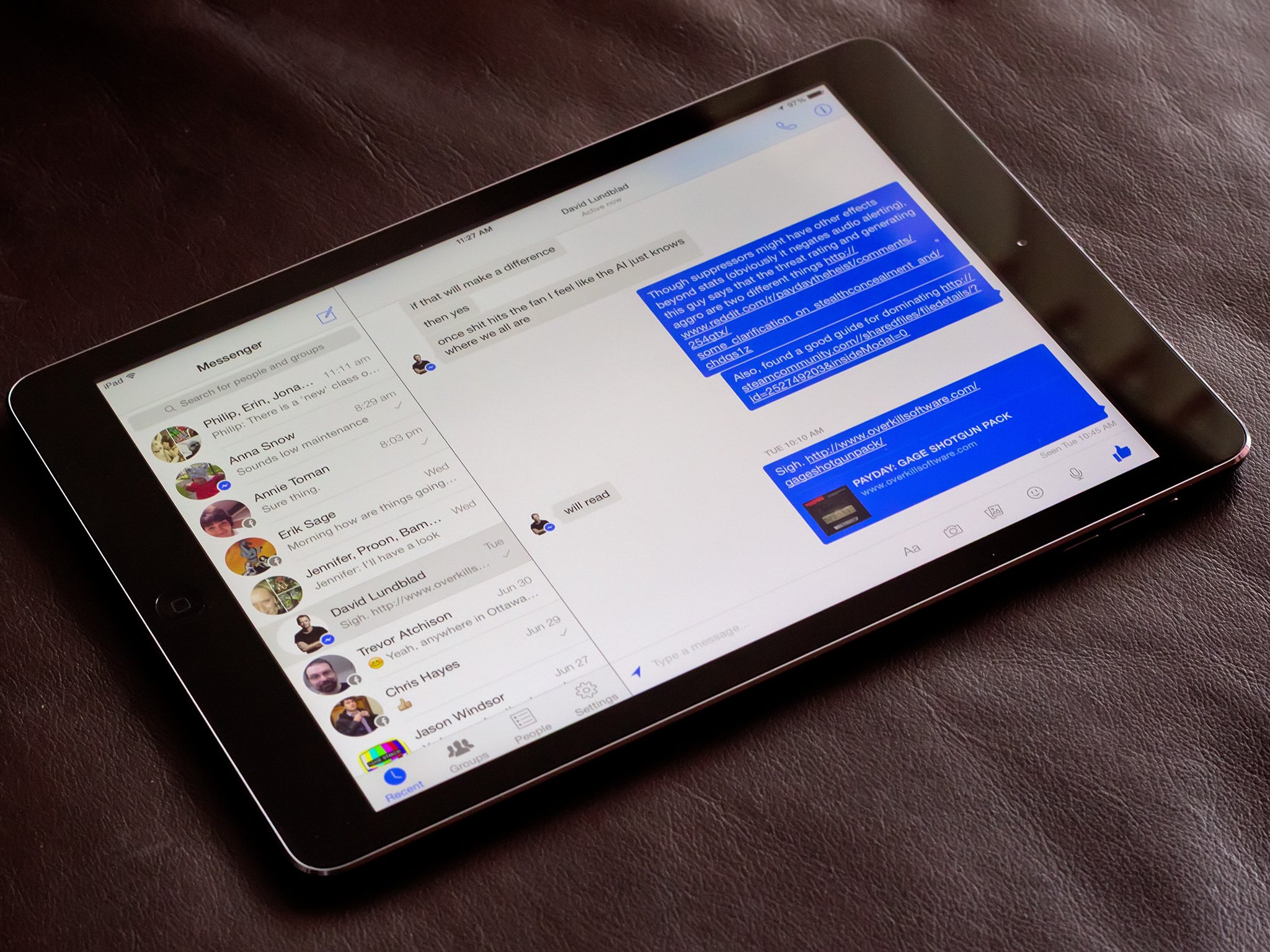Multi Messenger

Multi messenger free download - Messenger Kids, Abyssal Multi Messenger, Multi Messenger for Windows 10, and many more programs. Multi Messenger does not collect any personal information. Account information will only used to communicate within the services you use. In case the application crashes, Multi Messenger uses Microsoft Visual Studio Application Insights to track the crash log. The log contains information like OS version, Device type, Memory (MB), Mass storage. Multi Messenger is your All-in-One messaging app, that combines 26 services like WhatsApp, Facebook Messenger, Skype, Discord, Telegram and many more into one single App. 26 supported services: Discord Facebook Google Hangouts Google Messages Google Plus GroupMe ICQ Instagram LinkedIn Messenger mixi Printerest QQ reddit Skype Slack Steam Chat Telegram Tumblr TweetDeck Twitter VK WhatsApp.

Multi-messenger astronomy is astronomy based on the coordinated observation and interpretation of disparate 'messenger' signals. Interplanetary probes can visit objects within the Solar System, but beyond that, information must rely on 'extrasolar messengers'. The four extrasolar messengers are electromagnetic radiation, gravitational waves, neutrinos, and cosmic rays. They are created by different astrophysical processes, and thus reveal different information about their sources.
The main multi-messenger sources outside the heliosphere are expected to be compact binary pairs (black holes and neutron stars), supernovae, irregular neutron stars, gamma-ray bursts, active galactic nuclei, and relativistic jets.[1][2][3] The table below lists several types of events and expected messengers.
Detection from one messenger and non-detection from a different messenger can also be informative.[4]
| Event type | Electromagnetic | Cosmic rays | Gravitational waves | Neutrinos | Example |
|---|---|---|---|---|---|
| Solar flare | yes | yes | - | - | SOL1942-02-28[5][failed verification] |
| Supernova | yes | - | predicted[6] | yes | SN 1987A |
| Neutron star merger | yes | - | yes | predicted[7] | GW170817 |
| Blazar | yes | possible | - | yes | TXS 0506+056 |
Networks[edit]
The Supernova Early Warning System (SNEWS), established in 1999 at Brookhaven National Laboratory and automated since 2005, combines multiple neutrino detectors to generate supernova alerts.
The Astrophysical Multimessenger Observatory Network (AMON),[8] created in 2013,[9] is a broader and more ambitious project to facilitate the sharing of preliminary observations and to encourage the search for 'sub-threshold' events which are not perceptible to any single instrument. It is based at Pennsylvania State University.
Milestones[edit]
- 1940s: Some cosmic rays are identified as forming in solar flares.[5]
- 1987: Supernova SN 1987A emitted neutrinos that were detected at the Kamiokande-II, IMB and Baksan neutrino observatories, a couple of hours before the supernova light was detected with optical telescopes.
- August 2017: A neutron star collision in the galaxy NGC 4993 produced the gravitational wave signal GW170817, which was observed by the LIGO/Virgo collaboration. After 1.7 seconds, it was observed as the gamma ray burst GRB 170817A by the Fermi Gamma-ray Space Telescope and INTEGRAL, and its optical counterpart SSS17a was detected 11 hours later at the Las Campanas Observatory, then by the Hubble Space Telescope and the Dark Energy Camera. Ultraviolet observations by the Neil Gehrels Swift Observatory, X-ray observations by the Chandra X-ray Observatory and radio observations by the Karl G. Jansky Very Large Array complemented the detection. This was the first gravitational wave event observed with an electromagnetic counterpart, thereby marking a significant breakthrough for multi-messenger astronomy.[10] Non-observation of neutrinos was attributed to the jets being strongly off-axis.[11] On 9 December 2017, astronomers reported a brightening of X-ray emissions from GW170817/GRB 170817A/SSS17a.[12][13]
- September 2017 (announced July 2018): On September 22, the extremely-high-energy[14] (about 290 TeV) neutrino event IceCube-170922A[15] was recorded by the IceCube Collaboration,[16][17] which sent out an alert with coordinates for the possible source. The detection of gamma rays above 100 MeV by the Fermi-LAT Collaboration[18] and between 100 GeV and 400 GeV by the MAGIC Collaboration[19] from the blazarTXS 0506+056 (reported September 28 and October 4, respectively) was deemed positionally consistent with the neutrino signal.[20] The signals can be explained by ultra-high-energy protons accelerated in blazar jets, producing neutral pions (decaying into gamma rays) and charged pions (decaying into neutrinos).[21] This is the first time that a neutrino detector has been used to locate an object in space and a source of cosmic rays has been identified.[20][22][23][24][25]
References[edit]
Multi Messenger Download
- ^Bartos, Imre; Kowalski, Marek (2017). Multimessenger Astronomy. IOP Publishing. Bibcode:2017muas.book.....B. doi:10.1088/978-0-7503-1369-8. ISBN978-0-7503-1369-8.
- ^Franckowiak, Anna (2017). 'Multimessenger Astronomy with Neutrinos'. Journal of Physics: Conference Series. 888 (12009): 012009. Bibcode:2017JPhCS.888a2009F. doi:10.1088/1742-6596/888/1/012009.
- ^Branchesi, Marica (2016). 'Multi-messenger astronomy: gravitational waves, neutrinos, photons, and cosmic rays'. Journal of Physics: Conference Series. 718 (22004): 022004. Bibcode:2016JPhCS.718b2004B. doi:10.1088/1742-6596/718/2/022004.
- ^Abadie, J.; et al. (The LIGO Collaboration) (2012). 'Implications for the origins of GRB 051103 from the LIGO observations'. The Astrophysical Journal. 755 (1): 2. arXiv:1201.4413. Bibcode:2012ApJ...755....2A. doi:10.1088/0004-637X/755/1/2.
- ^ abSpurio, Maurizio (2015). Particles and Astrophysics: A Multi-Messenger Approach. Astronomy and Astrophysics Library. Springer. p. 46. doi:10.1007/978-3-319-08051-2. ISBN978-3-319-08050-5.
- ^Supernova Theory Group: Core-Collapse Supernova Gravitational Wave Signature Catalog
- ^'No neutrino emission from a binary neutron star merger'. 16 October 2017. Retrieved 20 July 2018.
- ^AMON home page
- ^Smith, M.W.E.; et al. (May 2013). 'The Astrophysical Multimessenger Observatory Network (AMON)'(PDF). Astroparticle Physics. 45: 56–70. arXiv:1211.5602. Bibcode:2013APh....45...56S. doi:10.1016/j.astropartphys.2013.03.003. hdl:2060/20140006956.
- ^Landau, Elizabeth; Chou, Felicia; Washington, Dewayne; Porter, Molly (16 October 2017). 'NASA Missions Catch First Light from a Gravitational-Wave Event'. NASA. Retrieved 17 October 2017.
- ^Albert, A.; et al. (ANTARES, IceCube, and the Pierre Auger Observatory) (16 Oct 2017). 'Search for high-energy neutrinos from binary neutron star merger GW170817 with ANTARES, IceCube, and the Pierre Auger Observatory'. The Astrophysical Journal. 850 (2): L35. arXiv:1710.05839. Bibcode:2017ApJ...850L..35A. doi:10.3847/2041-8213/aa9aed.
- ^Haggard, Daryl; Ruan, John J.; Nynka, Melania; Kalogera, Vicky; Evans, Phil (December 9, 2017). 'LIGO/Virgo GW170817: Brightening X-ray Emission from GW170817/GRB170817A/SSS17a - ATel #11041'. The Astronomer's Telegram. Retrieved December 9, 2017.
- ^Margutti, R.; Fong, W.; Eftekharl, T.; Alexander, E.; Chornock, R. (December 7, 2017). 'LIGO/Virgo GW170817: Chandra X-ray brightening of the counterpart 108 days since merger - ATel #11037'. The Astronomer's Telegram. Retrieved December 9, 2017.
- ^Finkbeiner, A. (2017-09-22). 'The New Era of Multimessenger Astronomy'. Scientific American. 318 (5): 36–41. doi:10.1038/scientificamerican0518-36. PMID29672499.
- ^https://gcn.gsfc.nasa.gov/gcn/gcn3/21916.gcn3
- ^Cleary, D. (2018-07-12). 'Ghostly particle caught in polar ice ushers in new way to look at the universe'. Science. doi:10.1126/science.aau7505.
- ^IceCube Collaboration (2018-07-12). 'Neutrino emission from the direction of the blazar TXS 0506+056 prior to the IceCube-170922A alert'. Science. 361 (6398): 147–151. arXiv:1807.08794. Bibcode:2018Sci...361..147I. doi:10.1126/science.aat2890. PMID30002248.
- ^'ATel #10791: Fermi-LAT detection of increased gamma-ray activity of TXS 0506+056, located inside the IceCube-170922A error region'.
- ^Mirzoyan, Razmik (2017-10-04). 'ATel #10817: First-time detection of VHE gamma rays by MAGIC from a direction consistent with the recent EHE neutrino event IceCube-170922A'. Astronomerstelegram.org. Retrieved 2018-07-16.
- ^ abAartsen; et al. (The IceCube Collaboration, Fermi-LAT, MAGIC, AGILE, ASAS-SN, HAWC, H.E.S.S., INTEGRAL, Kanata, Kiso, Kapteyn, Liverpool Telescope, Subaru, Swift/NuSTAR, VERITAS, VLA/17B-403 teams) (12 July 2018). 'Multimessenger observations of a flaring blazar coincident with high-energy neutrino IceCube-170922A'. Science. 361 (6398): eaat1378. arXiv:1807.08816. Bibcode:2018Sci...361.1378I. doi:10.1126/science.aat1378. PMID30002226.
- ^De Angelis, Alessandro; Pimenta, Mario (2018). Introduction to particle and astroparticle physics (multimessenger astronomy and its particle physics foundations). Springer. doi:10.1007/978-3-319-78181-5. ISBN978-3-319-78181-5.
- ^Aartsen; et al. (IceCube Collaboration) (12 July 2018). 'Neutrino emission from the direction of the blazar TXS 0506+056 prior to the IceCube-170922A alert'. Science. 361 (6398): 147–151. arXiv:1807.08794. Bibcode:2018Sci...361..147I. doi:10.1126/science.aat2890. PMID30002248.
- ^Overbye, Dennis (July 12, 2018). 'It Came From a Black Hole, and Landed in Antarctica - For the first time, astronomers followed cosmic neutrinos into the fire-spitting heart of a supermassive blazar'. The New York Times. Retrieved July 13, 2018.
- ^'Neutrino that struck Antarctica traced to galaxy 3.7bn light years away'. The Guardian. July 12, 2018. Retrieved July 12, 2018.
- ^'Source of cosmic 'ghost' particle revealed'. BBC. July 12, 2018. Retrieved 12 July 2018.
External links[edit]
- AMON website